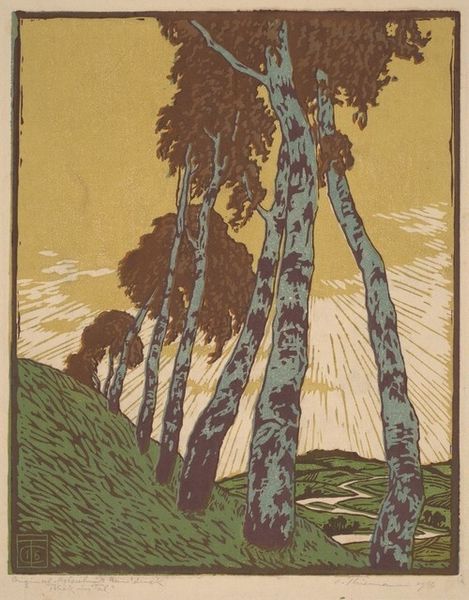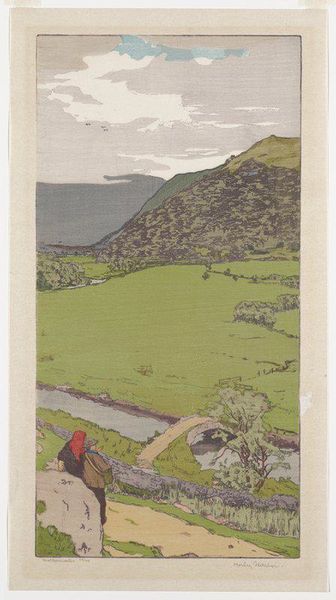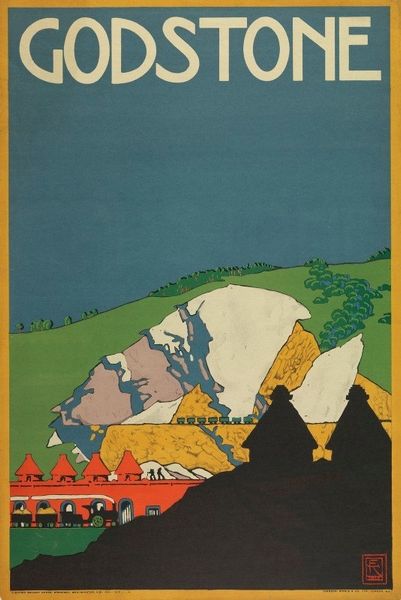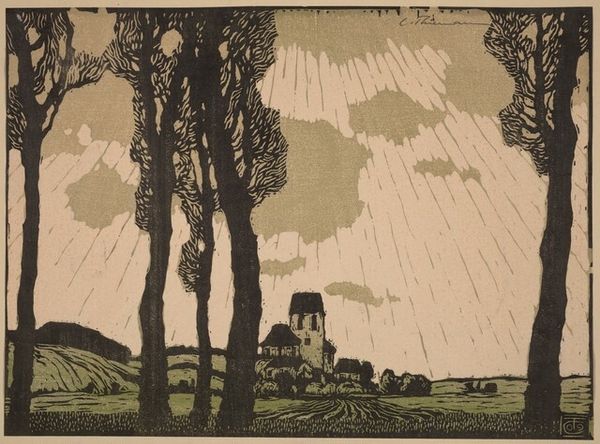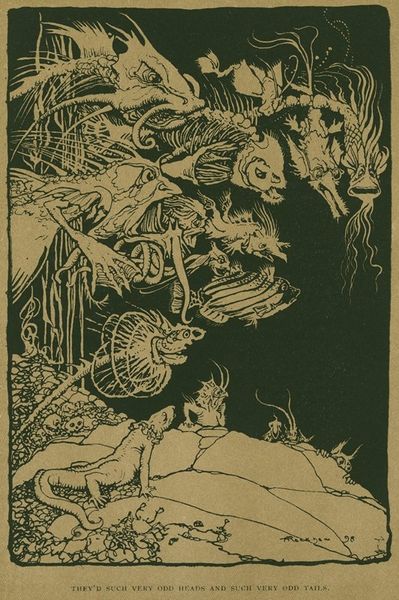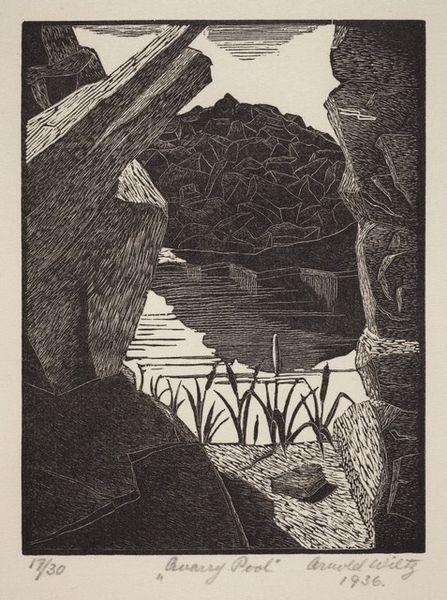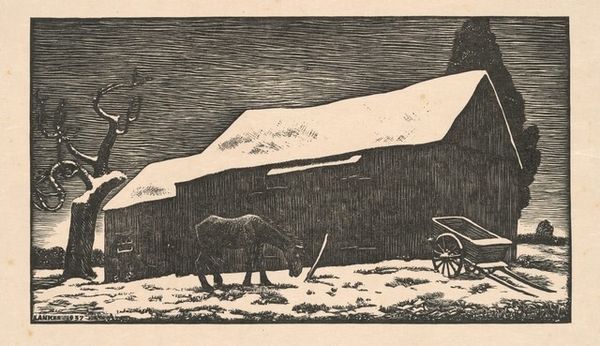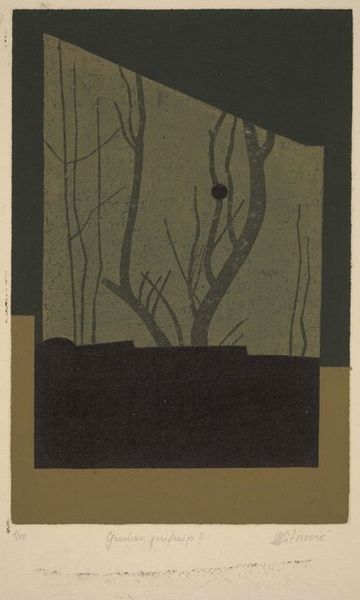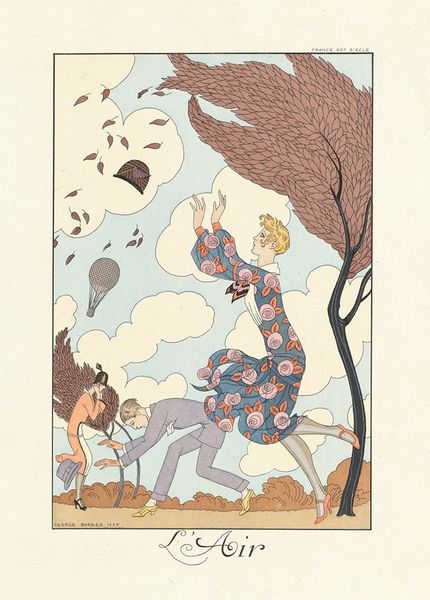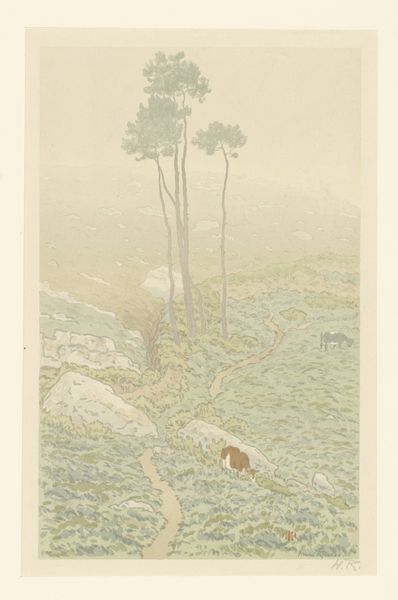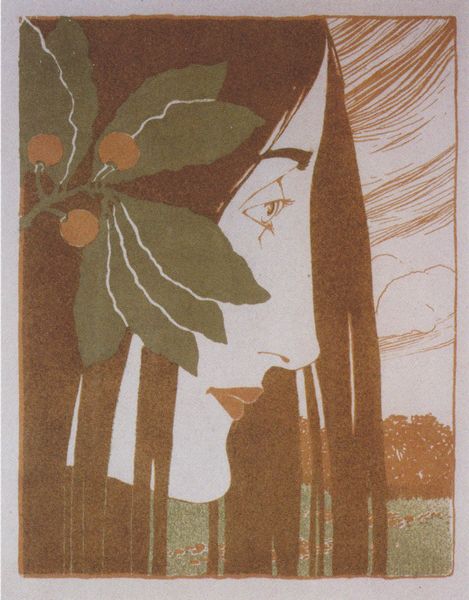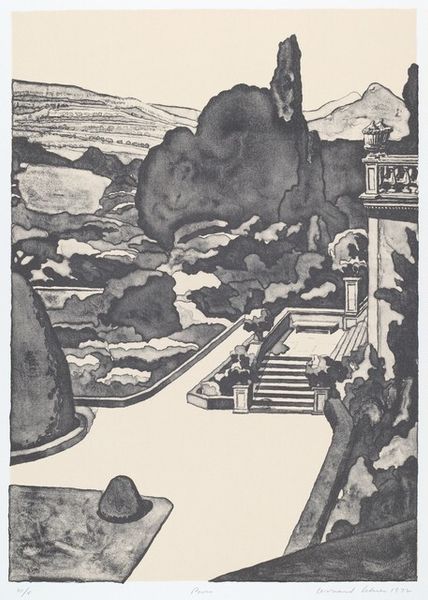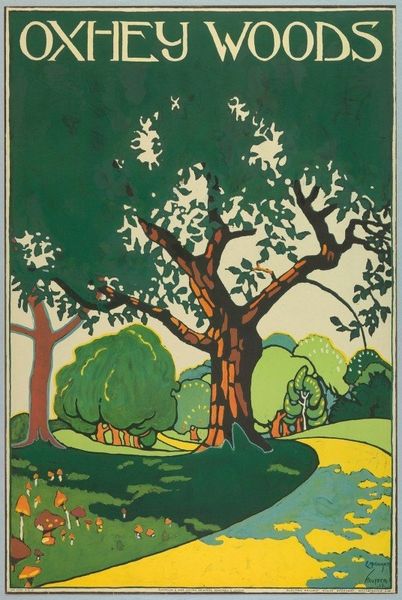
drawing, print, typography, woodcut, poster
#
drawing
# print
#
arts-&-crafts-movement
#
landscape
#
etching
#
typography
#
woodcut
#
poster
Copyright: Public Domain: Artvee
Editor: So, this is "Meadow-grass" by Alice Brown, created around 1895. It seems to be a woodcut, etching, or maybe even a poster advertising the publication "Meadow-grass". The color palette is very subdued. What’s interesting to me is how it almost feels like a scene viewed through a filtered lens. What catches your eye about it? Curator: What stands out is how this artwork intersects with the Arts and Crafts movement’s philosophy. It champions a return to handcrafted artistry during rapid industrialization. Notice the stylized depiction of nature? The flat planes of color, the emphasis on line, all push against the slickness of mass-produced images. The Latin phrase "Sicut Lilium Inter Spinas," meaning "as the lily among the thorns," speaks volumes. It hints at the beauty and fragility needing protection from the harsh realities of the modern world. How might Brown’s choices comment on gender within this socio-economic framework? Editor: I hadn’t thought about gender at all. Curator: Consider the association of women with nature, and how both are often sentimentalized, deemed vulnerable, or even "thorny." Brown seems to reclaim the beauty of the natural world through art. But perhaps this seemingly benign nature scene subtly challenges prevailing societal values of that era. How does framing it as an advert change your interpretation? Editor: Thinking about it as an advertisement makes it less about pure artistic expression and more about commerce… almost contradicting the anti-industrial ideals of the Arts and Crafts Movement. Curator: Exactly. The complexities are embedded within the work. By producing such art, promoting her book, or advertising the work of another female writer, Alice Brown engages with the market economy while critiquing industrial modes of production. Editor: That's a really interesting perspective, framing the art and commerce relationship like that. Thanks. Curator: My pleasure. These types of pieces make us question the many layers and competing dialogues from the past.
Comments
No comments
Be the first to comment and join the conversation on the ultimate creative platform.
